June 6th blog – Renée, Hannah and Rosstin
With our bags packed and spirits high, we bid adieu to Kolping Conference Centre after indulging in a mother delicious warm breakfast prepared by our beloved Bunduz chefs. We boarded our grand tour bus (with all tents, bedrolls, cooking equipment and luggage for our journey), a vehicle which never fails to catch everyone’s attention on the streets and set off for a four-hour journey to our next destination – Lake Naivasha, where hippos awaited us. Katie braided Mica’s hair as we prepared to board the bus, adding a touch of camaraderie to our morning routine.
Our first stop was the Kiambethu Tea Farm. As we merrily ascended towards the tea farm, the stark juxtaposition of small abodes and shops pushed in ‘cheek by jowl’ road caught our eyes. We come from a privileged part of the world, where we can enjoy the biodiversity and wildlife of Kenya, while millions live on far less money. This contrast gave us much to ponder and should inspire us to work towards societally-engaged and equitable biodiversity conservation with a renewed sense of purpose.
We noticed the soil getting redder in colour owing to the increasing acidity and iron content, which is ideal for growing tea. However, the proximity of the road to the landscape edges highlighted the soil erosion evident from the loose, runoff soil. Upon our arrival at the tea farm, we were greeted by Fiona, the owner (and granddaughter of the founder of the plantation) of the Kiambethu Tea Farm, which has been part of the Kenyan tea legacy for over a century. They specialise in Camellia assamica, brought from Assam, India, as the name suggests, by her grandfather’s friend when they started tea farming despite being architects from London. The subtleties of tea flavour depend on the conditions they’re grown in, and the farming methods used. However, small-scale plantations like Kiambethu lose their identity once they sell their tea leaves to the factory, which brands the tea under “Pure Kenyan Tea,” reducing tea to globally recognised borders instead of acknowledging the specific ecology and labor that goes into its production.
Julius, who has dubbed himself fittingly as ‘Doctor Julius’, took us on a medicinal tour through a local patch of native forest that Kiambethu has preserved, where we saw a magnificent Mugumo or fig tree, considered sacred in Kenya. It was interestingly connected to the McCoy tree through roots, which is used to treat malaria.As we ventured further into the depths of the medicinal aromas, Julius Doctor Julius showed us the Citronella plant, also known as lemongrass, used as a mosquito repellent. We did consider smuggling some for our forthcoming war with mosquitoes at Lake Naivasha. He also taught us the difference between coffee and tea leaves, the latter being more serrated at the edges, and handed us a bark that can be boiled to treat a sore throat.
We spotted vibrant species of birds, insects, and chameleons. Sarah marvelled at a female chameleon (species to be confirmed) while Renée captured a butterfly (species to be confirmed) in Fiona’s garden.
After our tour, Dr. Wang showcased his sword-fighting skills using Julius’ weapon – an armament used in guarding the forest. We concluded our tea expedition with Fiona’s amazing home-cooked cuisine, including homemade ice cream! Over some Kenyan beer (and our table as there were two other tables were we had assembled), Dr. Wang shared the story of the ‘Tuscan chamber’ research published in the journal Nature, wherein empty Tuscan beer bottles were used as a chamber in the methodology. We learned that research does not necessarily need fancy equipment—sometimes, a beer bottle will do just fine. The amazing meal filled our bellies, as we prepared for the upcoming field expeditions.
Our second stop was the Great Rift Valley, spanning 9600 km from Mozambique to the Red Sea, one of the richest biodiversity hotspots in the world. Dr. Lougheed and Dr. Wang told us that it is also an important spot for palaeontologists and anthropologists exploring ancient hominid fossils. The site was awe-inspiring, triggering an emotional response as we realised we were standing near the evolutionary origin of all humanity. This is where it all started.
It was ironic to see Coca-Cola, a large corporation, promoting one of the significant areas of unique biodiversity. We made friends with Susan, a local guide at the Great Rift Valley, who taught us that the famous phrase “Hakuna Matata” means “No problem” and “Simba” means “lion” in Swahili. These words are Swahili and of course not original to the the Lion King (yet another reminder that the world is much more than the West).
Our journey to Lake Naivasha became even more wonderful after some giraffes blessed us with their presence on the way in.
As promised, our field expedition at Lake Naivasha began with setting up tents (no, it’s not as easy as it seems). We helped Lucas and Idris set up the big dining-hall/lecture room tent, which demanded almost a dozen pairs of hands.
Our day concluded with a debriefing session with the professors, wherein we discussed our observations and the implications of the tea plantation on the sociocultural and ecological milieu, providing a holistic lens to our collective experiences of the day. Looking forward to seeing the hippos in our boat ride inn the next few days – not to worry it will be at a safe distance!
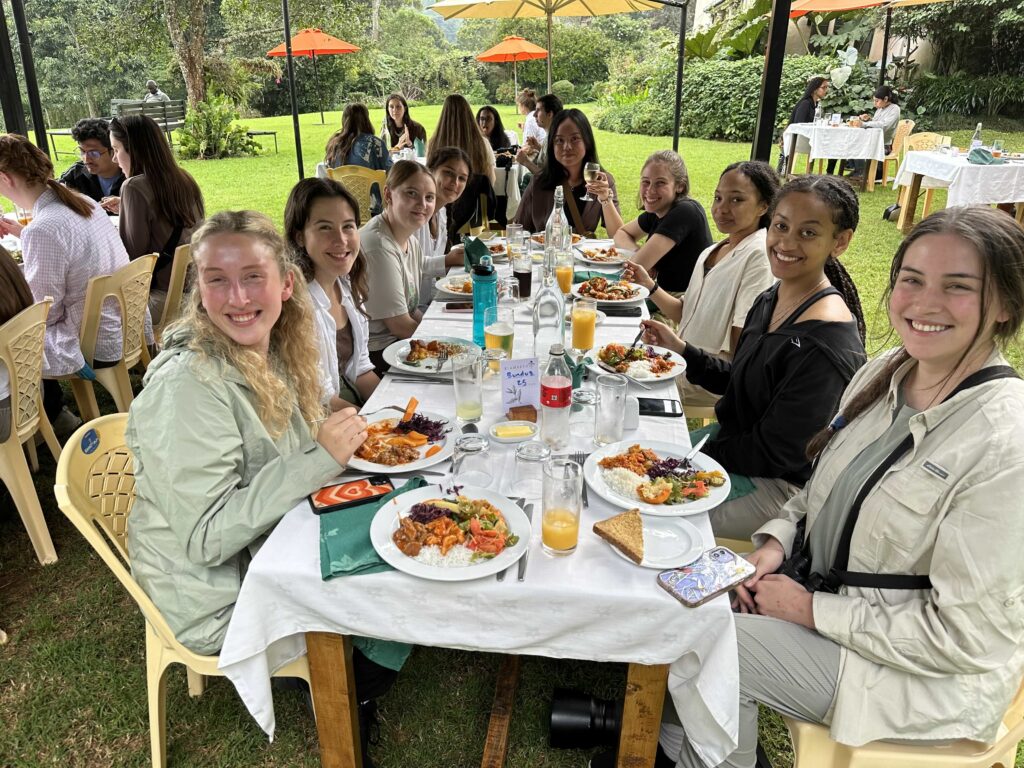
Lunch at Kiambethu Tea Plantation
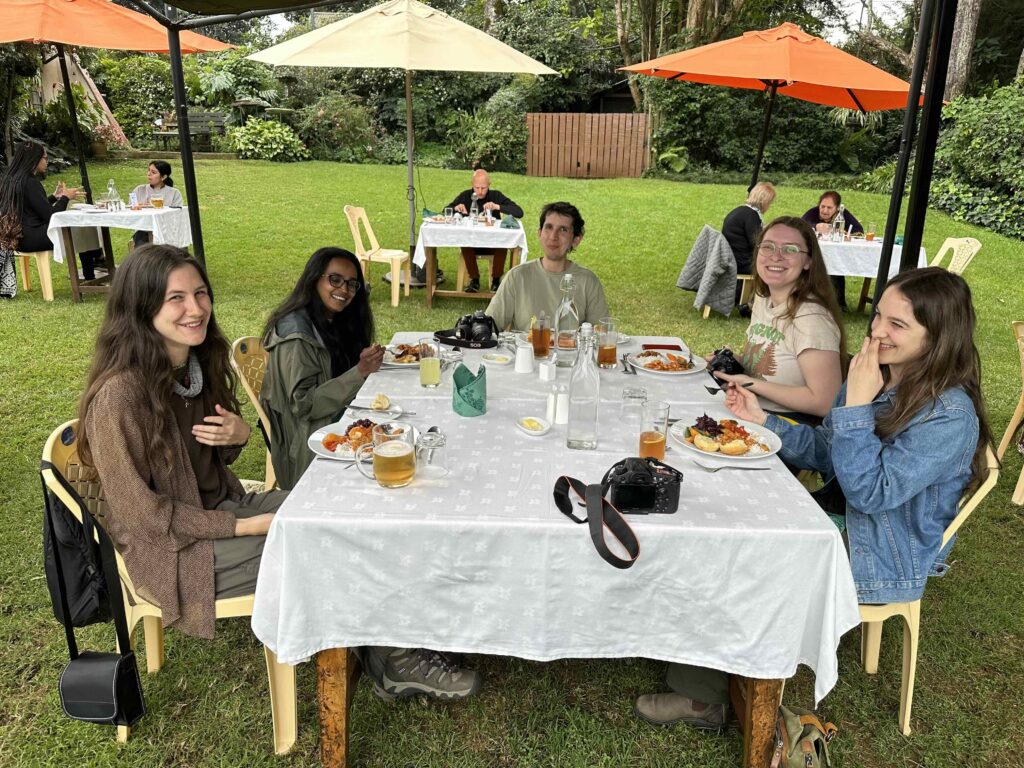
Lunch at Kiambethu Tea Plantation
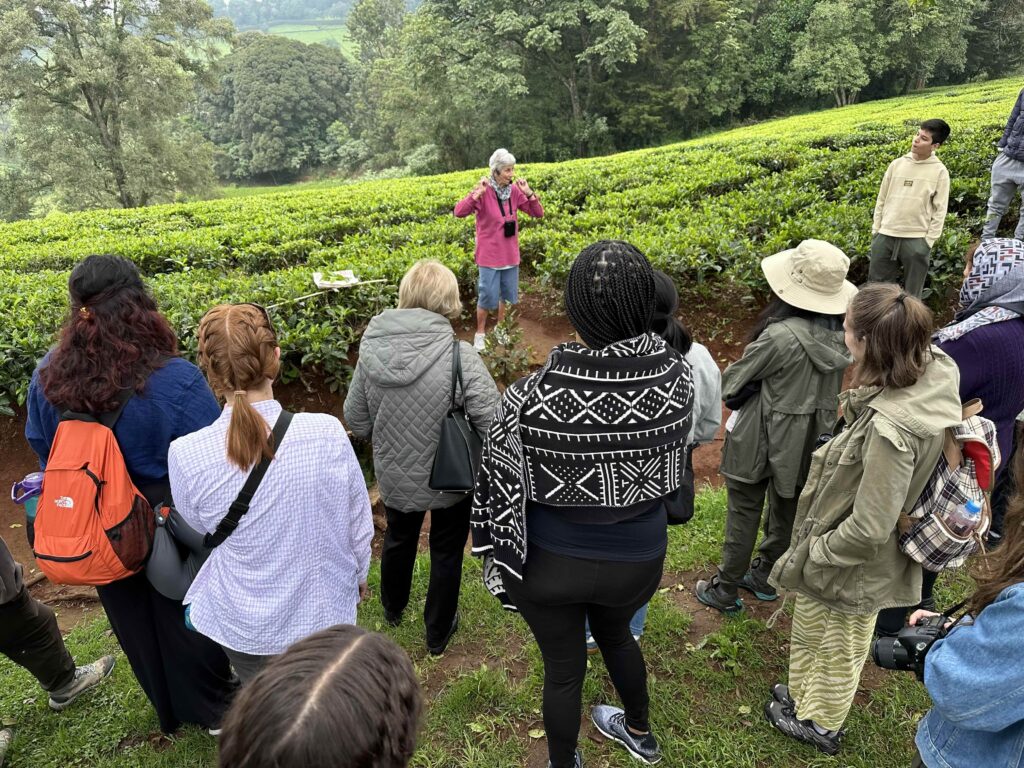
Kiambethu tea plantation owner Fiona telling us about growing and harvesting tea
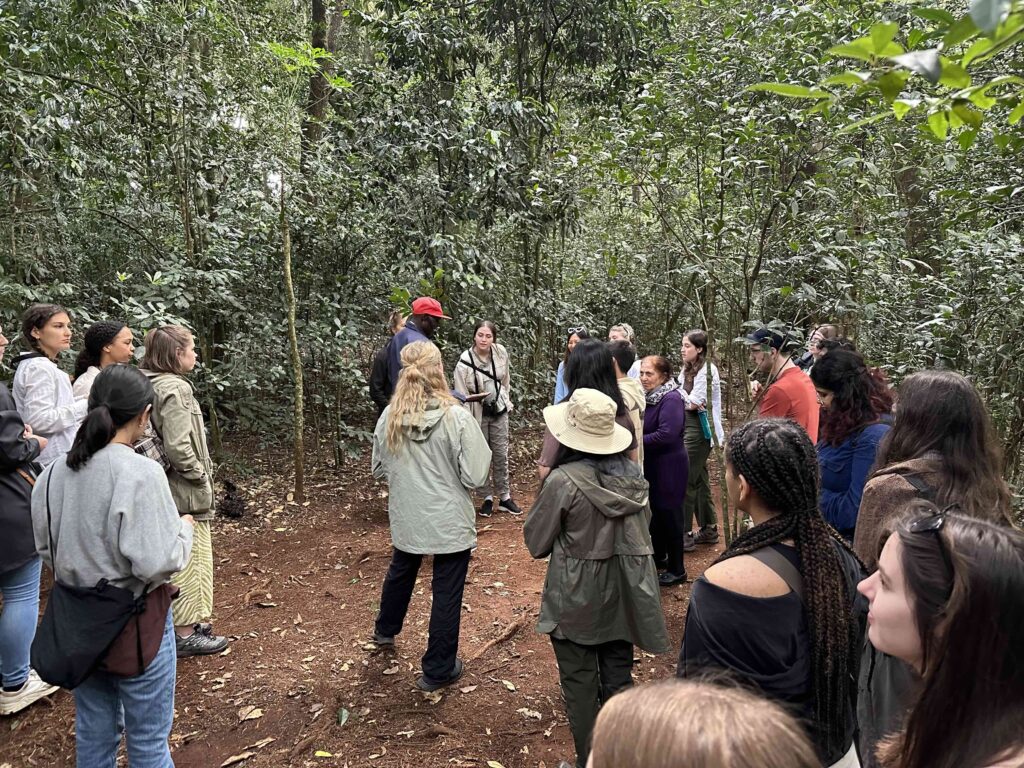
‘Dr. Julius’ giving us a tour of the local native forest that the medical properties of individual trees and shrubs
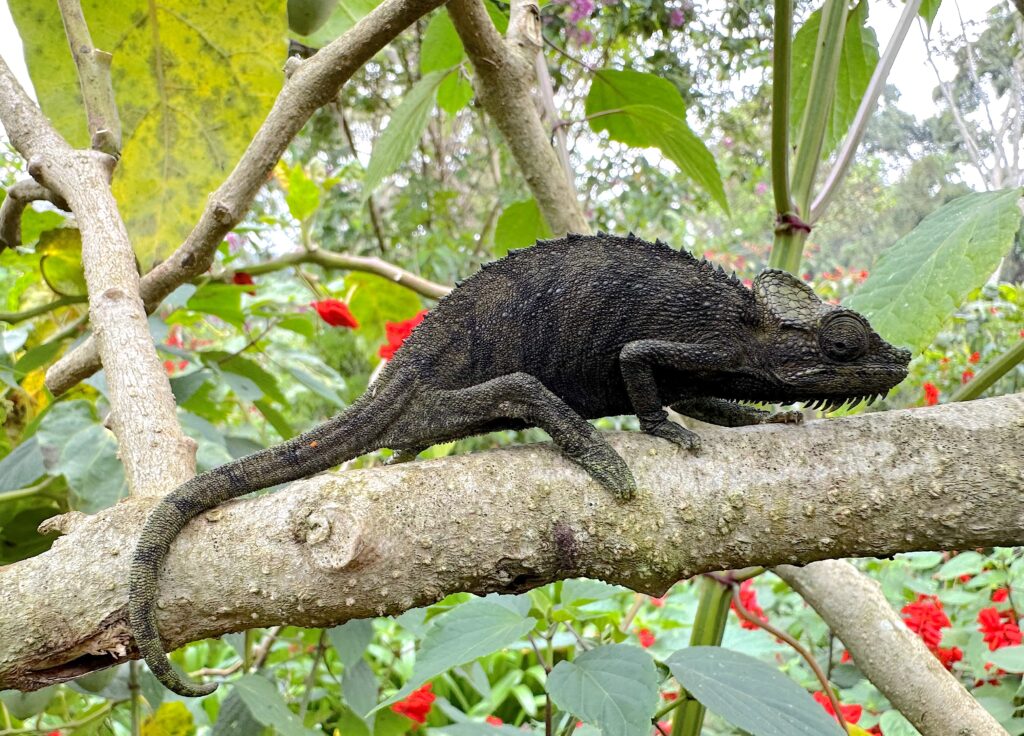
High-casqued chameleon
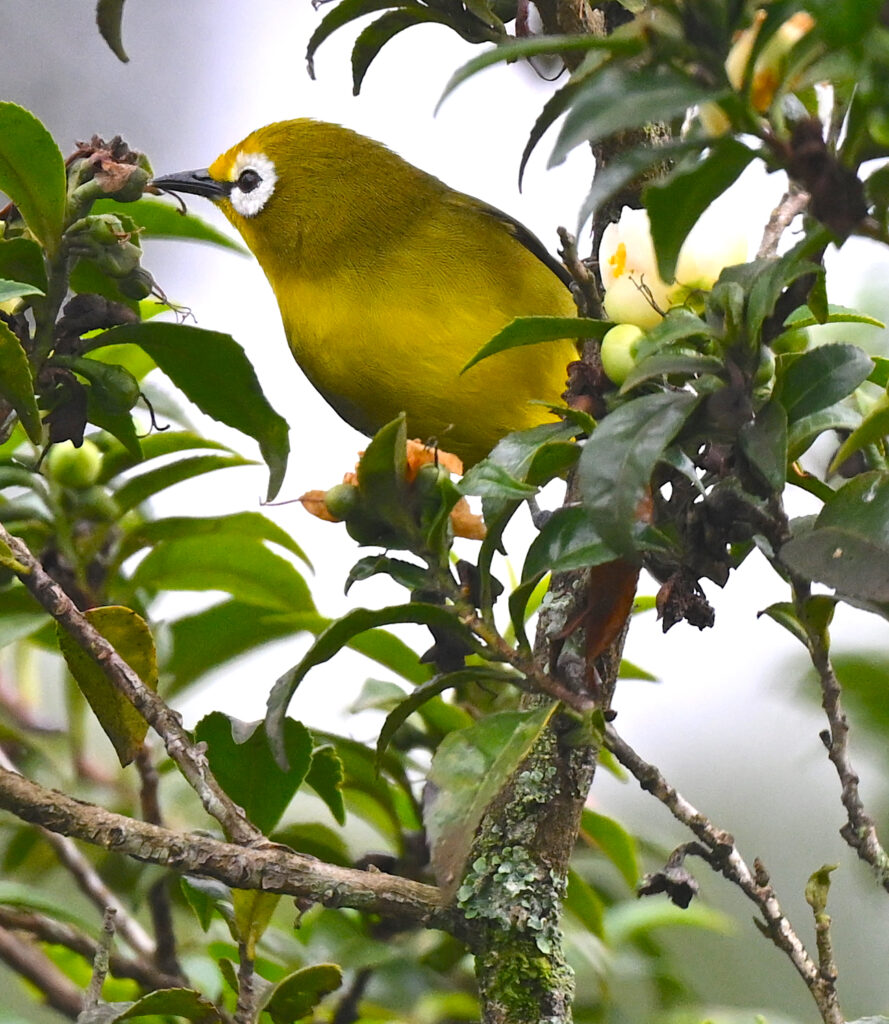
northern yellow white-eye
Loving all the details! Well done in capturing so many specifics on all that you are learning!!
Hakuna matata! Great mixing of both science and culture🤓